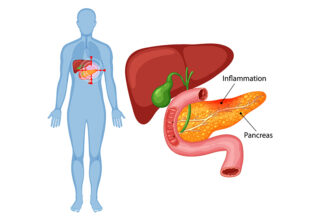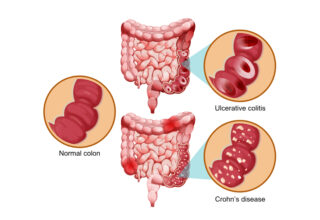Both panic attacks and asthma attacks can feel terrifying. They may look similar as they share symptoms like difficulty breathing and tightness of chest. But they’re two different conditions with their own causes and management approaches.
Knowing how to tell them apart can make a big difference in how you respond—whether calming your mind or reaching for an inhaler.
Let’s understand the differences between panic attack vs asthma attack, including their common symptoms, key differences, and what to do if you’re experiencing them.
What is a Panic Attack?
A panic attack is a sudden episode of intense fear and anxiety that causes physical reactions when there’s no apparent cause or danger. It’s an exaggeration of your body’s normal response to stress and can feel like something’s seriously wrong.
Common Symptoms of Panic Attack
- Shortness of breath or choking sensation
- Rapid heart beat
- Palpitations
- Chest tightness or pain
- Sweating
- Tremors, shaking, or chills
- Tingling sensations in hands and face
- Hot flushes
- Dizziness or lightheadedness
- Faintness
- A feeling of losing control or impending doom
Panic attacks usually peak within 10–20 minutes and then start to fade.
Although they’re not life-threatening, they can feel or look like a medical emergency.
It’s also possible to experience a panic attack without any obvious or noticeable physical symptoms, known as a silent panic attack.
What is an Asthma Attack?
Asthma is a common and long-term condition that causes breathing difficulty.
During an asthma attack the airways in your lungs tighten or swell and become narrow, making it hard for air to move in and out of your lungs. This causes difficulty in breathing.
It’s often triggered by allergens (such as pollen and pet dander), irritants (like smoke and perfume), physical exertion, or stress and anxiety.
If left untreated, asthma attacks can quickly become very dangerous.
Common Symptoms of an Asthma Attack
You might be having an asthma attack if your reliever inhaler isn’t helping, your peak flow score is much less than usual, or you’re experiencing symptoms like:
- Wheezing (a whistling sound while breathing)
- Shortness of breath that worsens with activity
- Chest tightness
- Persistent Coughing
- Trouble speaking full sentences or walking due to breathlessness
Asthma attacks can vary in intensity from being mild to severe. They may require urgent medical care if breathing becomes extremely difficult.
Panic Attack vs Asthma Attack: Key Differences
Although both conditions involve shortness of breath and chest tightness, here are some key differences between a panic attack and an asthma attack that can help you distinguish between them.
| Feature | Panic Attack | Asthma Attack |
| Cause | Sudden surge of anxiety or stress response | Narrowing and inflammation of airways |
| Breathing | Feels difficult, but airways are clear | Restricted airflow due to airway constriction |
| Onset | Sudden | Can be sudden or develop gradually |
| Duration | Usually peaks within 10–20 mins | Can last longer, may worsen without treatment |
| Other symptoms | Racing heart, dizziness, tingling, fear of dying | Wheezing, coughing, chest tightness |
| Triggers | Stress, phobias, medication side effects, major life changes | Allergens, exercise, extreme temperatures, stress |
| Management approach | Calming techniques, breathing exercises, anti-anxiety medicines (if prescribed) | Inhaler (bronchodilator). Corticosteroids, emergency medical help if the attack is severe |
What to Do:
If You think it’s a Panic Attack
- Try slow, deep breathing to relax yourself. Inhale slowly through your nose and exhale slowly through your mouth.
- Use 5-4-3-2-1 grounding technique. Engage yourself by focusing on your senses. Think of 5 things you can see, 4 things you can touch, 3 things you can hear, 2 things you can smell, and 1 thing you can taste.
- Remind yourself: This shall pass. Repeat reassuring phrases like “I’m safe”, “It’s going to be okay”. Panic attacks usually subside on their own.
- To avoid these attacks in future, try to manage your stress and anxiety, as they can build up to cause panic attacks.
If You think it’s an Asthma Attack
- Use your rescue inhaler as prescribed by your doctor
- Sit upright to make breathing easier
- Seek emergency help if symptoms don’t improve or worsen quickly
- To avoid these attacks in future, identify and avoid your triggers. As stress can also be a trigger for asthma attack so it also helps to manage your stress to prevent stress induced asthma attacks.
When to See a Doctor
If you’re unsure whether your symptoms are due to panic or asthma attack, it’s always safest to contact your doctor.
Frequent panic attacks can point towards an anxiety disorder that can be treated with therapy, medication, or lifestyle changes.
If you’ve already been diagnosed with asthma, it’s important to go for regular medical check-ups to make sure your management plan and inhaler use are on track.
Talk to your doctor about adjusting your asthma treatment if your symptoms are worsening, such as increased wheezing, frequent coughing or chest tightness, or needing your rescue inhaler several times a week.
Final Thoughts
While panic attacks and asthma attacks can look similar, they are two different conditions. Panic attacks are driven by the body’s response to stress, while asthma attacks are caused by airway inflammation and narrowing.
Understanding their differences can help you respond effectively and avoid unnecessary fear or delayed treatment.
If you’re experiencing repeated episodes of shortness of breath or chest tightness, don’t self diagnose—speak with your doctor right away.
The right support can help you stay calm and breathe easier.








